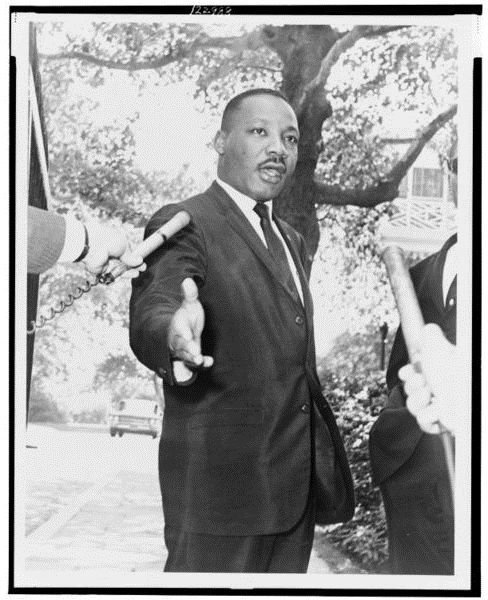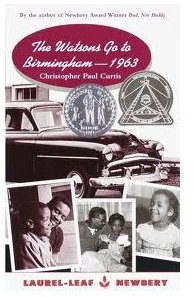Book Activities & Lesson Ideas for The Watsons Go to Birmingham—1963
What Is This Book?
When you consider the excellent characters, themes, symbols, and the historically relevant setting created by Christopher Paul Curtis’ first novel you can see why there is so much scope for a good lesson. Students will enjoy reading about Kenny Watson’s childhood growing up in Flint, Michigan, with his family, the Weird Watsons, and teachers will enjoy witnessing students respond to a novel they can clearly relate to and reflect upon.
Preparing to Write to Describe Conflict
You should include activities for students to review key literary terms, work collaboratively, and provide opportunities for creative expression. To complete this activity, prepare students with definitions, explanations, and examples of conflicts and metaphors.
First, students will participate in a group round robin activity, so they should be seated in groups of two to three people each. At the top of separate sheets of paper, write categories of metaphors. Types of board games, types of weather, names of candies, names of food, types of animals, types of tools, and types of music are a few examples of categories you can use. Give each group one of these sheets of paper and set a timer for 2-4 minutes. Students will work together to list as many types of items found on each individual paper. When the time is up, one person from each group will pass the paper to the next group. When each metaphor category has been passed around, tape the pages to the chalkboard and ask students to look them over once more and add anything new they might have forgotten. They will use this information for the next part of the activity.
Writing to Describe Conflict
Curtis’ novel, like any good story, is full of conflicts and complications. While still in groups, have students brainstorm a list of conflicts for one character from the novel. Next, students will choose 5-10 metaphors from their lists on the board which could describe the conflict for one character.
For example:
CHARACTER—Byron
CONFLICT—gets his lips stuck on the cold car mirror
METAPHORS to describe Byron’s problem—game of Risk, plateau, fog
The next step is to extend the metaphor. Students will choose only one of the metaphors brainstormed and describe how the conflict is like the one metaphor they chose.
For example:
Early in the novel Byron decides to kiss his reflection on a cold mirror and accidentally freezes his lips to the mirror. I can compare Byron’s conflict to a plateau because just when it seems like Byron is making good choices and walking on level ground, he suddenly dips and plummets to a new low, just like a plateau. Also, recovering from this incident was a struggle for Byron, which is similar to the struggle a person would face if he chose to climb to the top of the plateau. In short, Byron could have avoided this mess if he had helped Kenny scrape the ice from the car windows, but instead he successfully demonstrated how his lack of intelligence plateaus.
Mix It Up
This writing activity utilizing metaphors to describe conflict may be modified in a variety of ways:
- Students may turn in one group product or create individual products.
- Ask students to use two different colors to highlight the conflict and the metaphor with descriptors in the paragraph.
- Shorten the length of paragraph required.
- Ask students to demonstrate a specific type of sentence structure within the paragraph.
- Request that students write their conflict description in the form of a free verse poem.
- For the final product, ask students to either provide an illustration or use a sheet of construction paper or colored paper and cut out an object to symbolize the metaphor, and then transfer their writing onto the cut-out.
Research Activities
Lesson planning ideas for The Watsons Go to Birmingham offers a wide variety of activities for students. Here are a few more ideas for immersing your students into fun-filled and educational activities for this fascinating novel.
- The greatest history lesson students can gain through lesson planning ideas for The Watsons Go to Birmingham would be to learn about the Civil Rights movement during the 1960s. They can research and answer questions such as Why did it happen? How did people respond? Who were the leaders? How did the movement change society? Apart from research, students can also try some of the following activities.
- Create collage posters demonstrating themes like tolerance, equality, family, and choices.
- Jigsaw Martin Luther King, Jr.’s “I Have a Dream” speech within class. Each student reads one section of the speech. This can serve as a class project or as a school performance.

-
Create a 1963 bulletin board which contains information for topics such as popular songs, TV shows, movies, cars and technology, fashions, news stories, and the social issues of the time period. Students might even have a 1963 dress up day or have a show and tell with items they’ve borrowed from grandparents. Give students an opportunity to compare the world they live in now with the one Kenny, Byron, and Joetta grew up knowing in the novel.
-
Have students discuss the significance of four symbols from this novel—the white angel Joetta received, the Brown Bomber, the stolen winter gloves, and the mourning dove. Create a torn paper art quilt of scenes from the novel interchanged with these symbols. Torn paper art is simply pieces of paper torn and pieced together like a mosaic image. Each student can complete a scene from the novel or one of the symbols. Place each of the final pages of art in order to create a quilt. Tape the edges together or place the pages in sheet covers to connect with binder clips or brads.
Use any of these activities for your lesson planning ideas for The Watsons Go to Birmingham—1963 and you will help students to express their creativity either metaphorically or through art while capturing the sincere lessons Curtis’ novel has to offer.
Article Resources
Curtis, Christopher Paul. The Watsons Go to Birmingham—1963. Dell Laurel-Leaf: New York, 1995.
Promoting Metaphorical Thinking Through Synectics: Developing Deep Thinking Utilizating Abstractions, by David E. Walker Ed.D.
Image Sources
https://commons.wikimedia.org/wiki/File:Martin_Luther_King_Jr_NYWTS_2.jpg
This post is part of the series: The Watsons Go to Birmingham-1963 Resources for Classroom Use
Prepare to teach The Watsons Go to Birmingham-1963 by previewing the articles in this series. You’ll find great time-saving ideas for your lesson plans.
